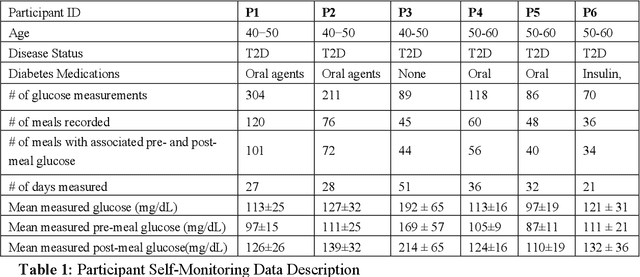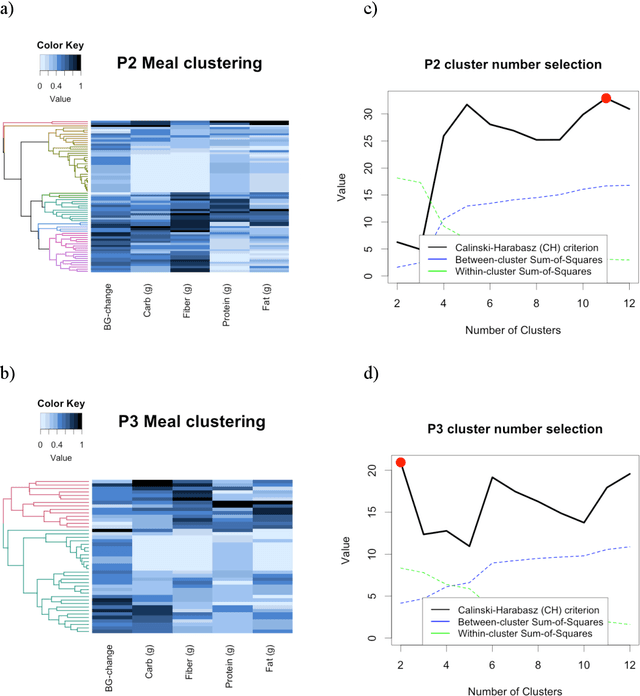David J. Albers
Multi-Task Gaussian Processes and Dilated Convolutional Networks for Reconstruction of Reproductive Hormonal Dynamics
Aug 27, 2019



Abstract:We present an end-to-end statistical framework for personalized, accurate, and minimally invasive modeling of female reproductive hormonal patterns. Reconstructing and forecasting the evolution of hormonal dynamics is a challenging task, but a critical one to improve general understanding of the menstrual cycle and personalized detection of potential health issues. Our goal is to infer and forecast individual hormone daily levels over time, while accommodating pragmatic and minimally invasive measurement settings. To that end, our approach combines the power of probabilistic generative models (i.e., multi-task Gaussian processes) with the flexibility of neural networks (i.e., a dilated convolutional architecture) to learn complex temporal mappings. To attain accurate hormone level reconstruction with as little data as possible, we propose a sampling mechanism for optimal reconstruction accuracy with limited sampling budget. Our results show the validity of our proposed hormonal dynamic modeling framework, as it provides accurate predictive performance across different realistic sampling budgets and outperforms baselines methods.
Behavioral-clinical phenotyping with type 2 diabetes self-monitoring data
Feb 23, 2018



Abstract:Objective: To evaluate unsupervised clustering methods for identifying individual-level behavioral-clinical phenotypes that relate personal biomarkers and behavioral traits in type 2 diabetes (T2DM) self-monitoring data. Materials and Methods: We used hierarchical clustering (HC) to identify groups of meals with similar nutrition and glycemic impact for 6 individuals with T2DM who collected self-monitoring data. We evaluated clusters on: 1) correspondence to gold standards generated by certified diabetes educators (CDEs) for 3 participants; 2) face validity, rated by CDEs, and 3) impact on CDEs' ability to identify patterns for another 3 participants. Results: Gold standard (GS) included 9 patterns across 3 participants. Of these, all 9 were re-discovered using HC: 4 GS patterns were consistent with patterns identified by HC (over 50% of meals in a cluster followed the pattern); another 5 were included as sub-groups in broader clusers. 50% (9/18) of clusters were rated over 3 on 5-point Likert scale for validity, significance, and being actionable. After reviewing clusters, CDEs identified patterns that were more consistent with data (70% reduction in contradictions between patterns and participants' records). Discussion: Hierarchical clustering of blood glucose and macronutrient consumption appears suitable for discovering behavioral-clinical phenotypes in T2DM. Most clusters corresponded to gold standard and were rated positively by CDEs for face validity. Cluster visualizations helped CDEs identify more robust patterns in nutrition and glycemic impact, creating new possibilities for visual analytic solutions. Conclusion: Machine learning methods can use diabetes self-monitoring data to create personalized behavioral-clinical phenotypes, which may prove useful for delivering personalized medicine.
Towards Personalized Modeling of the Female Hormonal Cycle: Experiments with Mechanistic Models and Gaussian Processes
Nov 30, 2017



Abstract:In this paper, we introduce a novel task for machine learning in healthcare, namely personalized modeling of the female hormonal cycle. The motivation for this work is to model the hormonal cycle and predict its phases in time, both for healthy individuals and for those with disorders of the reproductive system. Because there are individual differences in the menstrual cycle, we are particularly interested in personalized models that can account for individual idiosyncracies, towards identifying phenotypes of menstrual cycles. As a first step, we consider the hormonal cycle as a set of observations through time. We use a previously validated mechanistic model to generate realistic hormonal patterns, and experiment with Gaussian process regression to estimate their values over time. Specifically, we are interested in the feasibility of predicting menstrual cycle phases under varying learning conditions: number of cycles used for training, hormonal measurement noise and sampling rates, and informed vs. agnostic sampling of hormonal measurements. Our results indicate that Gaussian processes can help model the female menstrual cycle. We discuss the implications of our experiments in the context of modeling the female menstrual cycle.
 Add to Chrome
Add to Chrome Add to Firefox
Add to Firefox Add to Edge
Add to Edge